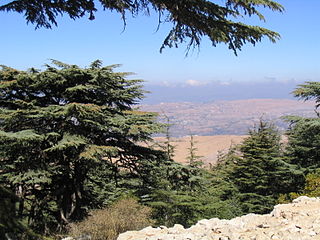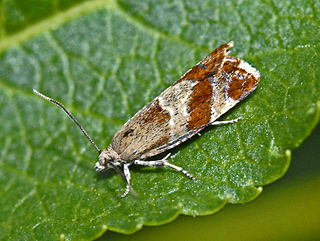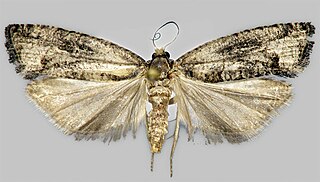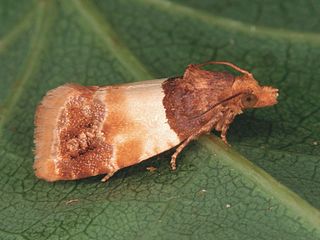
Cedrus, with the common English name cedar, is a genus of coniferous trees in the plant family Pinaceae. They are native to the mountains of the western Himalayas and the Mediterranean region, occurring at altitudes of 1,500–3,200 m in the Himalayas and 1,000–2,200 m in the Mediterranean.

Epinotia immundana is a moth of the family Tortricidae. It is found in China (Qinghai), Russia and Europe.

Epinotia solandriana is a moth of the family Tortricidae. It is found in Europe, China, Korea, Japan, and Russia.

Epinotia is a very large genus of tortrix moths. It belongs to the tribe Eucosmini of subfamily Olethreutinae.

Epinotia cruciana, the willow tortrix, is a moth of the family Tortricidae.
Epinotia rubiginosana is a moth of the family Tortricidae. It is found from Europe to eastern Russia, China, Korea and Japan.

Epinotia brunnichana is a moth of the family Tortricidae. It is found in most western, central and northern Europe, the Near East and further east to the eastern Palearctic realm, where it has been recorded from Russia, Kazakhstan, China, and Japan.

Epinotia maculana is a moth of the family Tortricidae. It is found in most of Europe, east to the eastern part of the Palearctic realm.

Epinotia demarniana is a moth of the family Tortricidae found in most of Europe, east to the eastern part of the Palearctic realm.
Epinotia trossulana is a moth of the family Tortricidae. It is found in western North America, from British Columbia, south through Utah to California.

Epinotia festivana is a species of moth of the family Tortricidae. It is found in most of southern Europe and the Near East.

Epinotia trigonella, the birch epinotia moth, is a species of moth of the family Tortricidae. It is found in most of Europe, east to the eastern Palearctic realm. It is also found in North America.

Epinotia thapsiana is a moth of the family Tortricidae. It was described by Philipp Christoph Zeller in 1847. It is found in the Netherlands, France, Spain, Portugal, Switzerland, Austria, Italy, Slovakia, Hungary, Slovenia, Serbia, North Macedonia, Albania, Greece, Russia, Asia Minor, Iran, Kyrgyzstan, Tajikistan, Turkmenistan, China and Korea.

Epinotia nemorivaga, the bearberry bell, is a species of moth in the family Tortricidae. It is found in Europe and Asia.
Epinotia pentagonana is a species of moth of the family Tortricidae. It is found in China (Jilin), Korea, Japan and Russia.
Epinotia pinicola is a species of moth of the family Tortricidae. It is found in China, Korea, Japan and Russia.
Lozotaenia cedrivora is a species of moth of the family Tortricidae. It is found in Algeria.
Epinotia algeriensis is a species of moth in the family Tortricidae. It is found in Algeria. The larvae feed on Cedrus atlantica.

Epinotia caprana is a moth belonging to the family Tortricidae. The species was first described by Johan Christian Fabricius in 1798.

Epinotia granitana is a moth belonging to the family Tortricidae. The species was first described by Gottlieb August Wilhelm Herrich-Schäffer in 1851.














